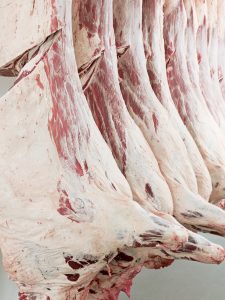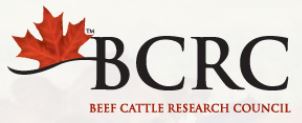



Are E. Coli Really Becoming More Heat Resistant?
The past few columns have talked about how antibiotic use contributes to antibiotic resistant bacteria. The same survival-of-the-fittest principle applies to environmental stresses like heat.Shiga-toxin-producing E. coli (STEC, including E. coli O157:H7) are the main food safety concern in Canadian beef processing facilities. High temperatures kill E. coli, so for many years large beef processing facilities have used hot water and steam to sanitize knives, equipment, carcasses and meat, and refrigeration to inhibit subsequent microbial re-growth. But if packing plants routinely use heat-based treatments to combat microbial contamination, will STEC and other E. coli eventually become heat-resistant and pose a risk to food safety?
Dr. Xianqin Yang and co-workers at Agriculture and Agri-Food Canada’s Lacombe Research and Development Centre and Alberta Agriculture and Forestry in Lethbridge recently asked Are Antimicrobial Interventions Associated with Heat-Resistant Escherichia coli on Meat? (Applied and Environmental Microbiology, https://doi.org/10.1128/AEM.00512-20.). They also studied Heat resistance in Escherichia coli and its implications on ground beef cooking recommendations in Canada (Journal of Food Safety, https://doi.org/10.1111/jfs.12769).
What They Did:
Two sets of E. coli isolates were studied. One set of 700 generic (non-STEC) E. coli had been collected at two federally inspected packing plants in Alberta between 2013 and 2015. One plant had sophisticated systems to wash carcasses with hot (55oC) water before skinning and used steam pasteurization (90oC) on skinned carcasses. E. coli were collected in January/February, April/May and September/October from carcasses before and after the hide-on carcass wash, as well as from skinned and dressed carcasses. Instead of using hot water, the other plant used knife trimming, a cold-water rinse and air-chilling to combat carcass contamination.
At this plant, E. coli were collected from carcasses before and after chilling, from equipment before and after cleaning, and from beef products. A second set of 750 STEC were collected from feedlot cattle or transport trailers during all months of the year between 2002 and 2017.
Even though many packing plants interventions (and home cooking) typically use higher temperatures, 60oC is a standard benchmark in heat resistance research. As a result, each E. coli isolate was first exposed to 60oC for 6 minutes to assess its heat resistance.
Each isolate was also examined to see if it carried heat resistance genes. They also inoculated hamburger with two heat-resistant E. coli O157 strains that had been collected from the cattle/transport study (one strain carried known heat-resistance genes and the other didn’t) and examined whether they could survive cooking to the recommended internal temperature endpoint of 71oC.
What They Learned:
Overall, fewer than 3% of E. coli isolates needed longer than 2 minutes at 60oC to kill 90% of the bacterial cells. The surviving 3% were equally distributed between both the generic packing plant and STEC cattle isolates.
Heat resistance genes were identified in 2% of generic E. coli and STEC isolates. At 60oC, 90% of the E. coli that lacked heat resistance genes were typically killed in a minute or less, while 90% of E. coli that carried heat resistance genes were killed in less than 3 minutes.
Effect of sanitation practices on heat resistance: No difference in heat resistance was observed between E. coli collected before or after the 55oC hide-on carcass wash in the first plant, or between E. coli isolates collected before or after carcass chilling in the other. In fact, heat resistance in E. coli isolated from equipment was higher before sanitation than after sanitation.
Has heat resistance increased over the years? The heat resistance of E. coli did not increase over a 15-year period, based on comparisons of STEC isolates collected from cattle between 2002 and 2017.
Heat resistance in STEC vs. generic E. coli: STEC isolates were able to survive heating to 60oC for 6 seconds longer than generic E. coli. This 6 second difference in survival was statistically significant but may be too brief to be important in real life.
Effect of season: Heat resistance among the various packing plant E. coli isolates was similar, regardless of the season they were collected in.
Cooking recommendations: When hamburgers that had been inoculated with heat-resistant E. coli were cooked to an internal temperature of 71oC and allowed to rest for five minutes after they had been removed from the grill, over 99.9999% of the heat-resistant E. coli were killed.
So What Does This Mean to Me?
Most E. coli strains collected from cattle and beef processing plants are heat sensitive. This indicates that heat-based carcass and equipment cleaning practices have not selected for heat-resistant E. coli. Because at-home or restaurant cooking exposes beef to heat for much longer periods of time, these results also suggest that current beef cooking recommendations to cook ground beef to at least 71oC internal temperature, and to cook muscle cuts (e.g. steaks and roasts) to 63oC, are still appropriate.



